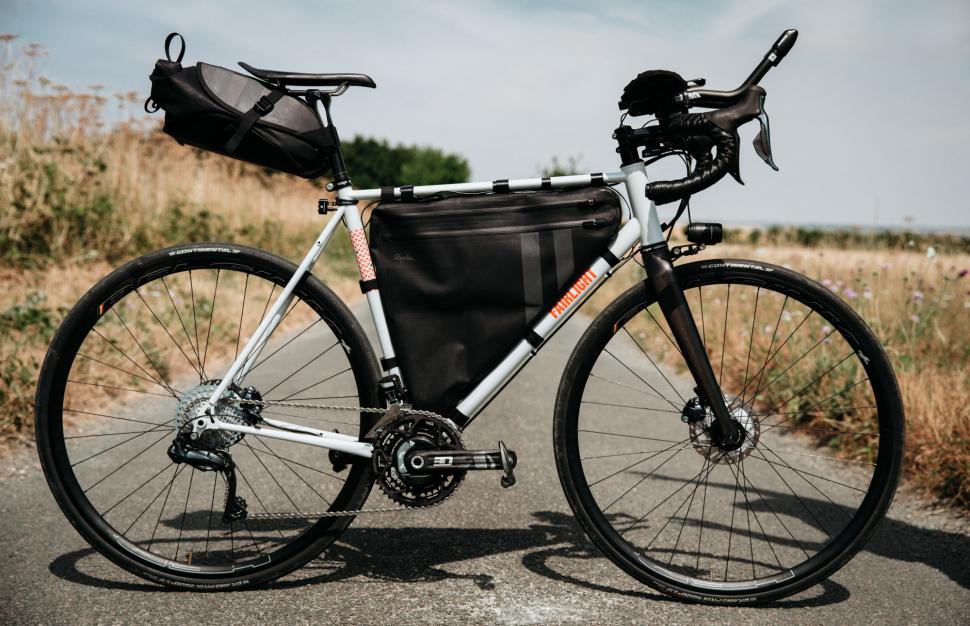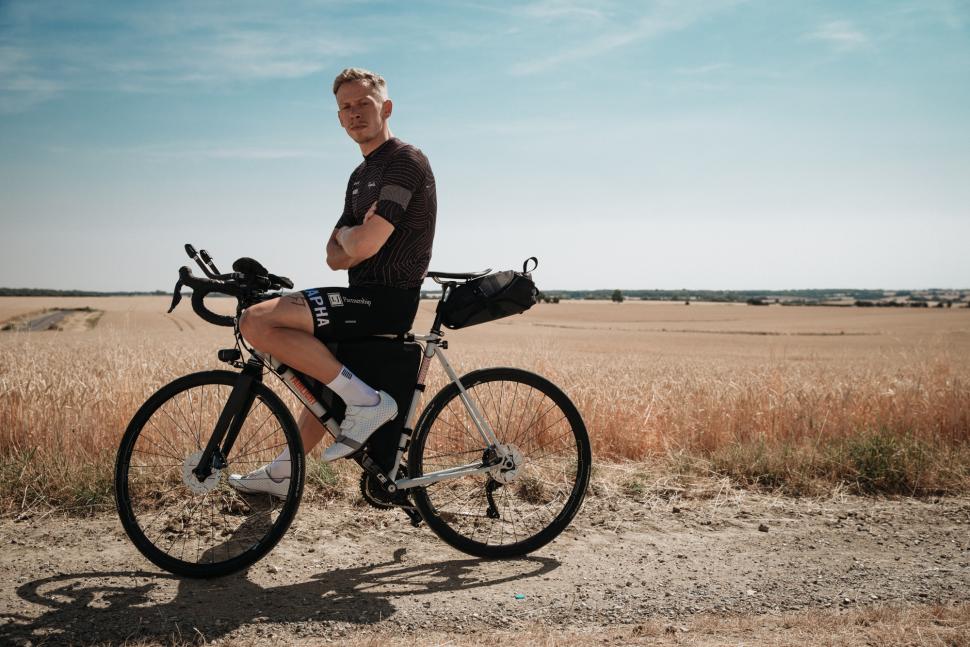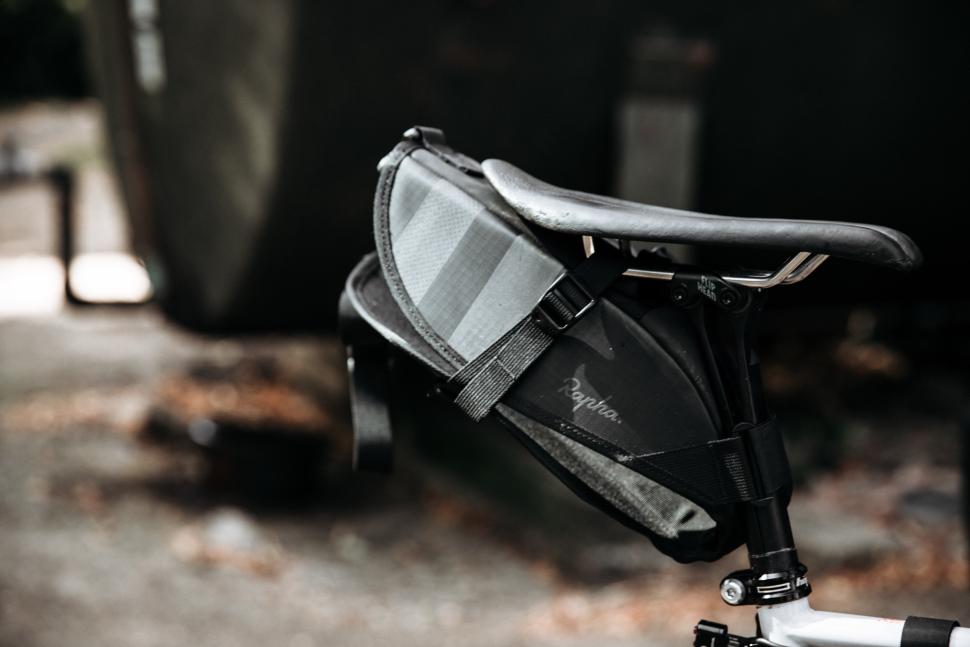- News
- Reviews
- Bikes
- Components
- Bar tape & grips
- Bottom brackets
- Brake & gear cables
- Brake & STI levers
- Brake pads & spares
- Brakes
- Cassettes & freewheels
- Chains
- Chainsets & chainrings
- Derailleurs - front
- Derailleurs - rear
- Forks
- Gear levers & shifters
- Groupsets
- Handlebars & extensions
- Headsets
- Hubs
- Inner tubes
- Pedals
- Quick releases & skewers
- Saddles
- Seatposts
- Stems
- Wheels
- Tyres
- Tubeless valves
- Accessories
- Accessories - misc
- Computer mounts
- Bags
- Bar ends
- Bike bags & cases
- Bottle cages
- Bottles
- Cameras
- Car racks
- Child seats
- Computers
- Glasses
- GPS units
- Helmets
- Lights - front
- Lights - rear
- Lights - sets
- Locks
- Mirrors
- Mudguards
- Racks
- Pumps & CO2 inflators
- Puncture kits
- Reflectives
- Smart watches
- Stands and racks
- Trailers
- Clothing
- Health, fitness and nutrition
- Tools and workshop
- Miscellaneous
- Buyers Guides
- Features
- Forum
- Recommends
- Podcast
TECH NEWS
James Hayden wins Transcontinental Race for second year running + Fairlight Strael bike check
James Hayden has won the 2018 Transcontinental Race, the sixth edition of the self-supported race founded by the late Mike Hall, completing a gruelling 3,405.9km from Belgium to Greece in just 8 days 22 hours 59 mins.
That's an astonishing time and a smidgen quicker than the 9 days 2 hrs 14 mins that won him the 2017 edition of the TCR. But it's the stopping time that is scary, just under 1 day 18 hrs. Now, while we wait for James to recover before giving his race-winning speech (they do that in the TCR do they?) here's a quick look at the bike he rode to victory.
He’s once again supported by Fairlight Cycles. Last year riding the company’s Strael disc-equipped steel bike, and this year switching over to the Strael 2.0 bike in a size 58R.
Fairlight offers a choice of two geometries for each frame size, Regular and Tall - regular is lower and longer for people with shorter legs and a longer back, and tall features a higher and shorter geometry for people with longer legs and shorter back.
The new model has a few changes of which you can read all about in our in-depth review here.
It looks like James stuck with largely the same equipment. Fair enough, if it worked well last year there’s no reason to make any radical changes. That means a Shimano Ultegra Di2 groupset with a Rotor Power2Max power meter crankset.
The interesting bit is the gear ratios and shows James has really sweated the details because he’s been riding 46/34t chainrings with a 13-34t cassette. No, you can’t buy this cassette, Fairlight rigged it up by combining sprockets from two donor cassettes. What a brilliant idea at achieving the desired ratios and gear jumps.
Wheels are a Hope RS4 rear hub and SONdeluxe dynamo front hub (a bikepacking essential) laced to HED Belgium rims with 32 spokes. Continental GP4000 tyres in a 25mm width may seem an odd choice given how rough some of the roads are, but we’d imagine on the HED rims that the tyres actually measure closer to 27 or 28mm. Extra width without the extra weight.
He’s also running inner tubes. I’d have thought tubeless would be preferable but maybe it’s just the simplicity of changing an inner tube in the middle of nowhere that inspired this choice?
Providing extra comfort is a Canyon VCLS seatpost, a really good choice as the novel split post design provides a noticeable amount of extra deflection at the saddle. His saddle is a stripped back ISM 1.0 saddle, same as he used last year.
Handlebar and stem come from FSA and he uses Profile Design aero bars, and a black Hope headset and seat clamp tie it all together.
It’s the same luggage approach as we saw last year, with a massive front triangle filling frame pack that neatly houses a 3-litre bladder and a seat pack. They are both prototypes provide by Rapha.
Talking of Rapha, the British clothing company has stepped up to provide James with custom printed Pro Team shorts and jersey, with a design inspired by maps given map reading skills are a pretty important requirement for bikepacking enthusiasts. The dark colours are for chosen for practicality but there are reflective accents for night riding. He also uses their shoes, socks and glasses.
Chapeau James, have a beer on us!
Thanks to https://fairlightcycles.com/ for providing the pictures and info.
We'll have more on this ride soon.
David worked on the road.cc tech team from 2012-2020. Previously he was editor of Bikemagic.com and before that staff writer at RCUK. He's a seasoned cyclist of all disciplines, from road to mountain biking, touring to cyclo-cross, he only wishes he had time to ride them all. He's mildly competitive, though he'll never admit it, and is a frequent road racer but is too lazy to do really well. He currently resides in the Cotswolds, and you can now find him over on his own YouTube channel David Arthur - Just Ride Bikes.
Latest Comments
- cmedred 1 sec ago
From the position of the cyclist when the video starts and the position of the bike later, it looks highly unlikely that the cyclist went "into the...
- Rendel Harris 6 min 12 sec ago
To rhyme with design. I wondered this myself so looked it up a while ago, according to the founder Micki Kozuschek he and his team had a few...
- Rendel Harris 59 min 24 sec ago
It's not being pedantic at all, careless driving is successfully prosecuted (and I have been in court more than once when a driver has been...
- HLaB 1 hour 22 min ago
It's hopefully an urban myth but I heard it was designed that way on purpose, so the cyclepath captured any flooding and the busway would remain clear
- mdavidford 1 hour 25 min ago
I should imagine eating chopsticks anywhere could be potentially rather perilous.
- Rendel Harris 1 hour 43 min ago
When The Badger stopped for protesters (albeit dockworkers rather than farmers) it was their stress gauges rather than his that would have been...
- Eurodolphin 2 hours 29 min ago
Having experienced a brain injury (while my helmet only suffered a little crack) I welcome all this excellent research which looks for ways to...
- mattw 2 hours 32 min ago
Nope. Has anyone ever bought a wheel trim studded with diamonds for their car? Thought not.
- David9694 2 hours 55 min ago
Dad of William Brown Jr battles Folkestone Town Council over illuminated sign featuring late son’s picture...
































Add new comment
19 comments
So his 'luggage' was just tools and a water bladder...is that all they need on this race? No spare clothes or anything? What about food? Do they have a support crew for all that?
And why did he need a power meter?
And why would Rapha have a prototype frame bag with a bladder in it? Can there really be a market for such a thing? Frame bags are great for clothes etc, but you don't want the faff of getting your bladder out of your frame bag every time you want to top up your water.
You know what ? This just about sums up what a lot of road.cc is has come to IMO. By the sound of it not only have you no idea what the event is, what it entails or it's rules are or what people have done to complete it - you seemingly can't even be bothered to summon up the effort to watch or listen to what James had to say about his equipment and why he chose it (and others and what they chose). Seriously, actually go and look at what you're bitching about and if you still have questions why not try and put them to the person you have a problem with. Please let us know the answers if you do.
What a peculiar rant. Why not take Bill Hicks' advice to those who work in marketing?
A lot of debate here about ideal ratios, surely its the job of Shimano etc to research and construct the ideal product for the largest number of people. Saying a 50t ring is generally too big - it isnt the minute you start going down a long fast downhill road. Saying an 11 tooth sprocket is too big.... Same. Thats why the 11-32 (and 11-34) cassettes exist. The gaps between the sprockets being too wide is the kind of thing racers worry about .. ironically.
11-up cassettes exist because they offer a wider range of gears and were originally created for MTB use, where outer chainrings are smaller. Pairing an 11T with a 50T chainring makes for a really high top gear.
Shimano & co. do a very good job of gear spacing but they're in the business of covering all options so offer a huge range of combinations for 7 through to 11 speed cassettes. Sheldon's gear calculator shows the percentage difference between cogs for nearly every commercially available cassette.
Choosing ratios for real-world riding in the conditions you experience is far more important than "what's my biggest gear" talk. Wide range 11-up cassettes make the spacing worse. By having a 12 or 13 tooth highest gear there are fewer big gaps, all else being equal.
50x11 is an unnecessarily (and some would argue inappropriately) high gear for the vast majority of non-racers. You can freewheel downhill, it's not compulsory to pedal. If you're not racing then it doesn't matter if you freewheel for a handful of seconds, you're still doing 35mph or whatever.
It's not only inappropriate cassettes - James did say he would have preferred a lower inner chainwheel than the 34T he has, but he couldn't get one for the Rotor set - as someone who runs 46/30 and 11-34, I can only concur!
I think it might have been because of the power meter that he couldn't go lower - Rotor support direct mount chainrings on a number of their cranks (including a 2INpower DM crankset) but 34 is the minimum for power2max spider.
That was my understanding too now I've watched the GCN video on YouTube - thanks again, amazon22, for the prompt.
It was interesting to note from watching the video that James is bothered about chainline concerns, too; the 46T outer means he doesn't have to go quite so far up the cassette to find his desired gear. Good stuff Oh, and as mentioned the cassette was a custom Miche after all rather than one made by cobbling together two donor cassettes.
Oh, and as mentioned the cassette was a custom Miche after all rather than one made by cobbling together two donor cassettes.
I've often considered 46T (and 12T on the back) to be fine for most people. I'm not so bothered about chainline but it would mean I could ride one cog further out and therefore have an additional lower gear available on rolling terrain before needing to switch to the inner ring. 50x11 is totally unnecessary unless you are racing (and not always then).
I don't have power meter and didn't want to spend big money so I just got a wolf tooth rear mech link extender thingie and went to a MTB 11-36 on back. With a 50/34 it gives you a good range of properly low gears but a whole bunch of wasted gears at top and an annoying gap around the crucial 16t mark - but best cheap compromise so far. SRAM and Miche cassettes always have better ratios for distance riding than Shimano who spread their cassettes more evenly but dont cater for those who want more useful gears around the 66-76 range.... Not quite sure why Shimano isn't using it's considerable skills to make us a hybrid adventure set. Seeing things like Cannondale advertising touring bikes with 2x11 sets with a 34x32 low is absurd.
Also... he's obviously pretty awesome rider and could win no matter what be rode but it's nice to see an off the peg steel bike winning a race...
I use a 33 on my Carbon cranks instead of the 36 when I know I'm doing hillier stuff, I also use a 28 on my compact Stronglight. The 'super' compact is not a new thing, personally I prefer having a triple as I can use the 24T for the really steep stuff and twiddle up even with my 97kg plus 15kg load.
Just so bloody annoying that Mr.Shimano has put two fingers up to touring/ordinary bike riders for years.
Shimano do great trekking sets for flat bar tourers - the deore and xt trekking kit wiht triples and hydralic brakes for decent prices as the international market for this has thus far been for flat barred bikes, as I am sure you are aware. Would be great if they could pull finger and bridge the gap between those sets and road sets. I think I am still mourning the loss of the Campy racing triple groupset!
Well done, that man.
Yes, it just goes to show the utter folly of 11T - and even 10T - sprockets for the mass market. I wonder what the exact sprocket sizes are on James' bike. I'm still on 10sp and, fortunately, I can just take off the 11T sprocket that comes with my XT 11-34 cassettes and replace with a 12T from a donor Tiagra or Ultegra cassette I have in stock. But if I'm forced to go to 11sp I had thought there would be difficulties trying to customise using a road and MTB cassette these days as many are going over to the spider/carrier model.
Crusty old cycletourists like me have been tapping out rivets and customising cassettes to make practical ratios for years.
It's good to see affirmation in this article that Fairlight and James Hayden are doing what the likes of Shimano should surely be doing in putting together sensible sprocket combinations. Ta for the heads up about 11sp Miche, amazon22. I suppose £65/70 isn't extortionate for a custom cassette given that 10sp XT cassettes are around £40 now.
Message deleted.
I make that an average of just over 11.75mph, peddling for 20 hours a day in over just under 9 days. Crickey. Surely that effort is worth a bit more than a few free bits and bobs from Rapha?
yeh it is the Power meter spider that means it cant go less than a 34T.
A huge achievement, well done to James. There's a pre-ride interview on youtube, where James says the cassette is a 13-34 Miche, and a quick google shows that custom combinations are available from the cycle clinic, so you can buy it!
That’s 1 day 18 hours stopped
Thanks! Obviously, that's a mistake trying to get the story up quickly in-between cooking my dinner and letting the dog out! 1 hr stoppage would be impossible!